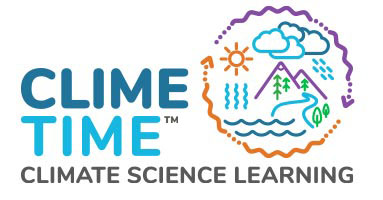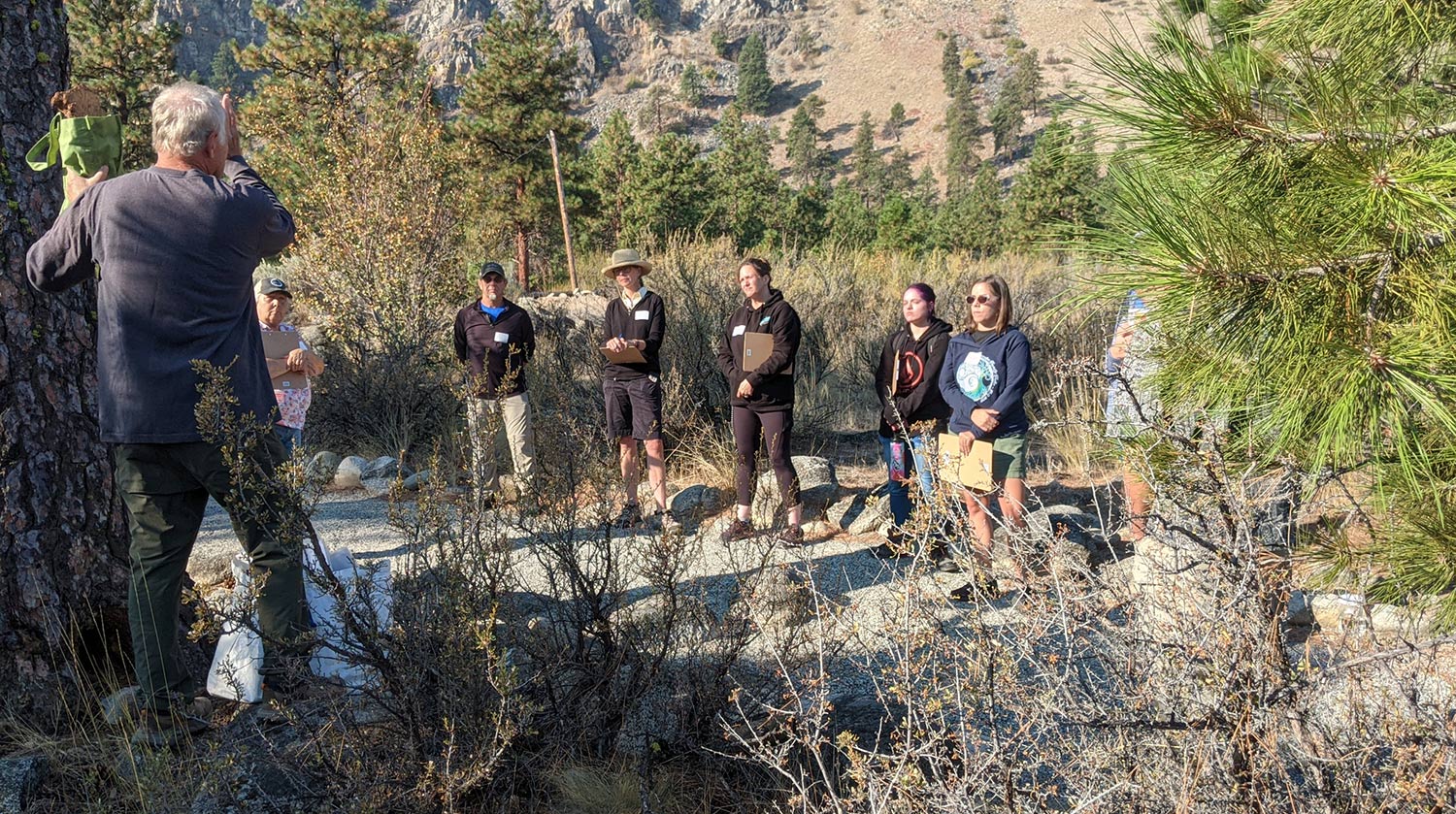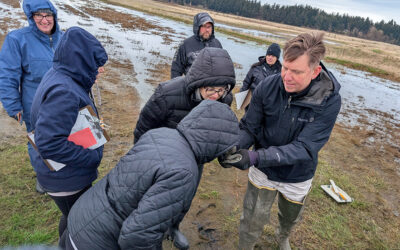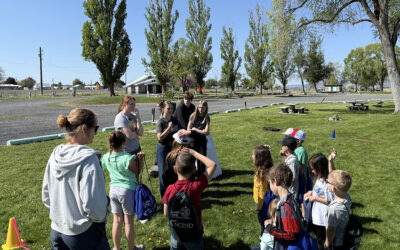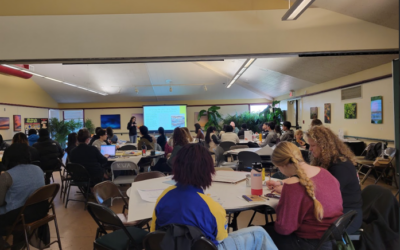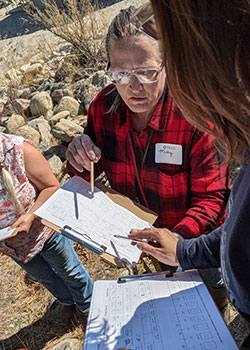
Teachers assessing fuel load with the landscape
“Right here we’re in a transition zone. This is where the shrub steppe transitions to the pine forest, and you can see a lot of space between the trees. That’s healthy!” Dave Spies led the educators of North-Central Washington on a half-mile interpretive walk through the world’s first center for education, training, research and interpretation of Wildland Fire. The Columbia Breaks Fire Interpretive Center was the perfect location for an October workshop on Pacific Education Institute’s (PEI) Solutions-Oriented Learning Storyline: Wildfire! Through the trail walk, participants learned about forest management practices, fire as part of a forest landscape, and pyrophytic plants (those which are adapted to regular wildfire).
In one of the three on-site fire lookout towers, educators climbed the stairs to get a close-up look at one part of the wildfire suppression system that started after “The Big Burn” (1910, one of the largest forest fires in American history). Look-out towers were staffed by someone 24 hours a day, 7 days a week to watch for signs of wildfire, which were then immediately reported and contained as quickly as possible. Suppression of the natural fire process, coupled with a changing climate, has contributed to dangerous conditions in our forests: overcrowding and overgrowth.
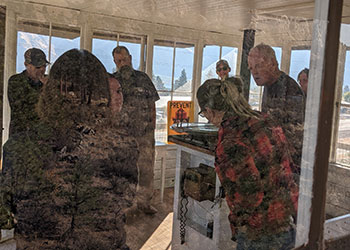
Inside the fire tower
On the trail, participants saw small-scale examples of different forest management strategies, from fire in the landscape to mechanical thinning, to fire suppression. The Storyline content made visible supported teacher learning and growth. “This is what school should look like for our students!” exclaimed one participant as she gathered data on a transect.
Hands-on experiments with tea-light candles and the fire triangle allowed educators to explore the challenge of fighting fires when so much fuel is present. North Central ESD provided stipends for participants to attend, and all were encouraged to take their learning back to their classrooms, with an additional stipend for storyline implementation. One participant will be taking the storyline back to her peers, and to an elementary school fire safety program. In all, 8 educators found their Saturday in Entiat to be a rejuvenating, bucket-filling experience they won’t soon forget.
